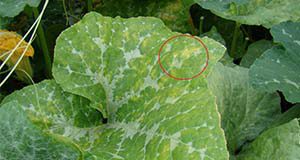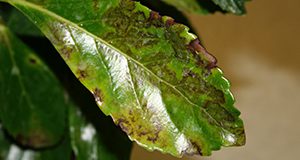Lettuce Downy Mildew (LDM), caused by the oomycete Bremia lactucae, is the most important disease of lettuce worldwide. LDM has a direct effect on both yield quantity and quality because it may infect lettuce at any growth stage, affecting the marketable portion of the crop. This new 6-page publication of the UF/IFAS Horticultural Sciences Department introduces the LDM disease in Florida lettuce and available control methods and strategies. This publication also introduces the work on LDM in the UF/IFAS Lettuce Breeding Program, which was created to release cultivars adapted to Florida conditions. Written by Lis Rodrigues-Porto, Richard N. Raid, and Germán V. Sandoya.
https://edis.ifas.ufl.edu/hs1403
Tag: downy mildew
Viburnum Downy Mildew
Downy mildew on viburnum is currently a serious concern throughout Florida. Winters in south Florida combine high humidity with cool nights, creating ideal conditions for disease development. Downy mildews are caused by several different species that tend to be host specific. Plasmopara vibruni is the pathogen that affects viburnum. This five-page fact sheet describes the hosts, symptoms, and management practices for Viburnum Downy Mildew.
Written by A. J. Palmateer and published by the Plant Pathology Department.
http://edis.ifas.ufl.edu/pp329
Management of Cucurbit Downy Mildew in Florida

Cucurbit downy mildew is a major disase that affects over 40 species of cucurbits, like watermelon, muskmelon, cucumber, squash, and pumpkin. The classic sign of the disease is the presence of dark sporangia, a structure that holds developing spores, on the underside of infected leaves. As the disease progresses, it may lead to large necrotic areas that cause defoliation and a reduction of yield and marketable fruit. This nine-page fact sheet describes the symptoms and signs, epidemiology and disease cycle, host range and pathotypes, and the ways to manage cucurbit downy mildew. Written by Mason J. Newark, Mathews L. Paret, Nicholas S. Dufault, Pamela D. Roberts, Shouan Zhang, Gary E. Vallad, Josh Freeman, and Gene McAvoy, and published by the Plant Pathology Department.
http://edis.ifas.ufl.edu/pp325

